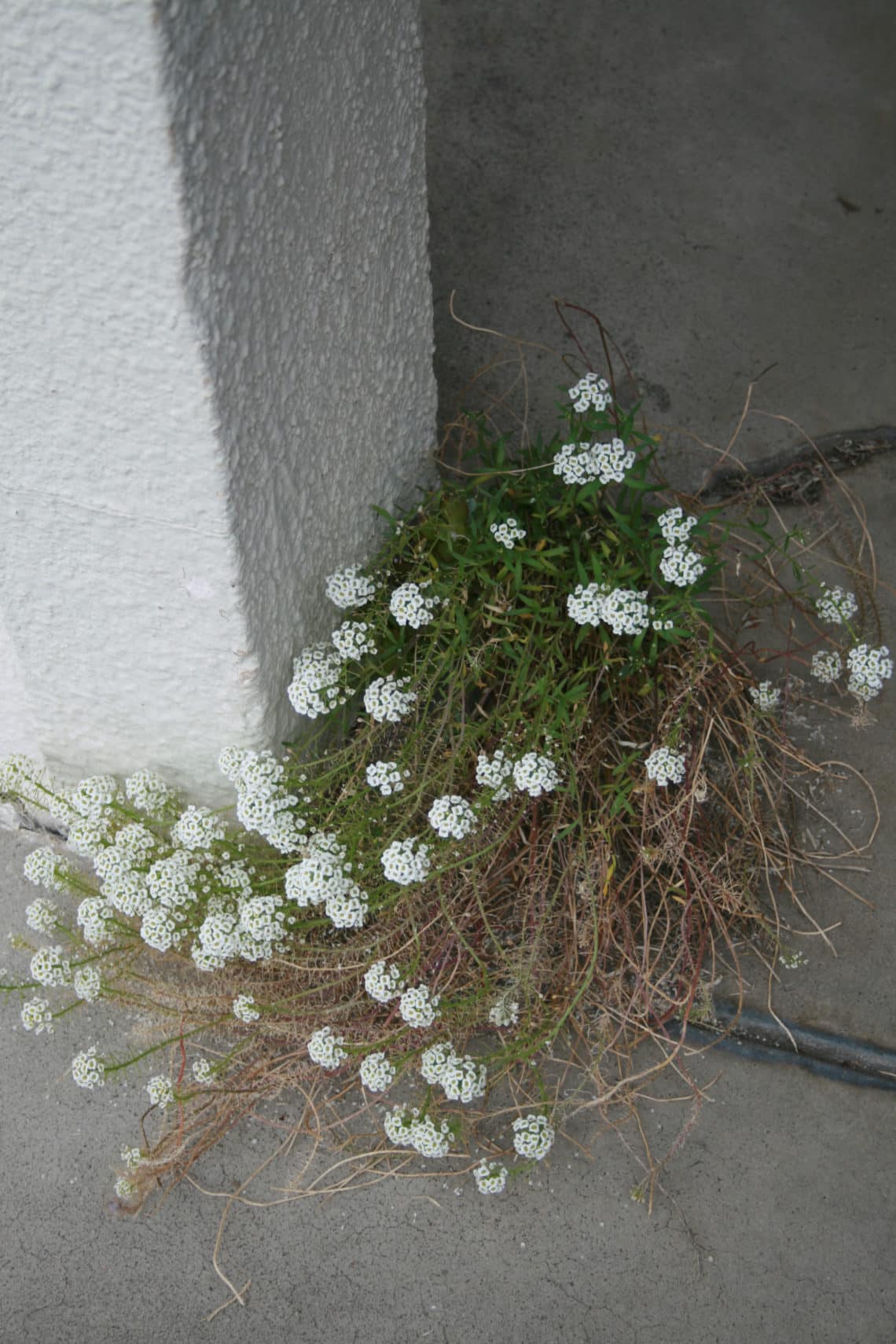Allowed to grow where they please, many plants pop up in the smallest of spaces. Take a look around the garden and you’re likely to see green growing from unexpected locations such as cracks in stone and concrete walls and pavement.
Peeking out of cracks and crevices, such plants add a touch of magical charm to the garden. Such plantings also soften hardscape and hide damaged concrete, and you don’t need many crevice plantings to make a statement.
While plants are certainly happy when they pop up in crevices and cracks, and many gardeners find the volunteer greenery welcome, you don’t have to wait for nature to do its thing. It’s possible to successfully plant in tight spaces, providing you do a little prep work and choose the right plants.
Locate/create cracks. Look around the yard for weeds in your concrete and stone surfaces, as many thrive in such tight quarters. If you don’t have any cracks in your concrete, use a Rota hammer to selectively remove square chunks of concrete. When working with brick and stone, take out individual pieces. Consult a landscape contractor if you are uncertain as to how to make cracks and crevices in your hardscape.
Inspect available root room. Insert a wooden or metal skewer into a crack to see how far it reaches. You want water to seep into the crevice and not drain away from it. If the skewer fails to go any farther than 1 inch, see if you can dig down a little further and break up the soil so a plant can take root.
Ensure good drainage. Plants that do well in crevices tend to like fast drainage, so it’s important that the spot drains well. If necessary, improve drainage by removing the soil and replacing with a mix of 50 percent planter’s mix and 50 percent pumice.
Choose small plants or seed. Limited root room requires that you start with tiny plants, such as the 1 1/2- to 2-inch starter plants found in nursery four- or six-packs. Seeding is ideal, as it allows the plants to develop roots to adapt to the crevice. Sprinkle seeds in the crack and apply a thin layer of vermiculite to help keep the area moist while the seeds germinate.
Plant with care. Minimize root damage by easing the plant roots into the crevice. Ensure that the roots make contact with soil and fill in with planter’s mix.
Water well. Soak the crevice after planting and keep the plants moist until they become established, which will be indicated by new growth.
Expect dieback. Forcing roots into tight spots and warm concrete or stone may cause some parts of the plants to die. Prune off the dieback. The healthy areas of the plants will eventually take over the crevice, and the plants will soon be thriving.
Maintenance. Once established, many crevice plants require very little care. Simply water them two or three times a week during the spring and summer months and apply a liquid fertilizer every one to two months.
Plant possibilities. Plants that do well in tight spots tend to be shallow rooted and drought tolerant. Good selections include plants suited to rock gardens and alpine-type plants native to high elevations. Choose from the following plants:
Alyssum
Baby’s tears
Basket-of-Gold
Blue star creeper
California poppy
Campanula poscharskyana
Chamomile
Corsican mint
Creeping/elfin thyme
Dichondra
Feverfew
Four o’clock
Hens and chicks
Erodium
Lobelia
Moneywort
Moss (Irish/Scotch)
Moss pink
Oxalis
Pennyroyal (dwarf)
Sea thrift
Stonecrop sedum
Valerian
Viola
Julie Bawden-Davis is a garden writer and master gardener, who since 1985 has written for publications such as Organic Gardening, Wildflower, Better Homes and Gardens and The Los Angeles Times. She is the author of seven books, including Reader’s Digest Flower Gardening, Fairy Gardening, The Strawberry Story, and Indoor Gardening the Organic Way, and is the founder of HealthyHouseplants.com

